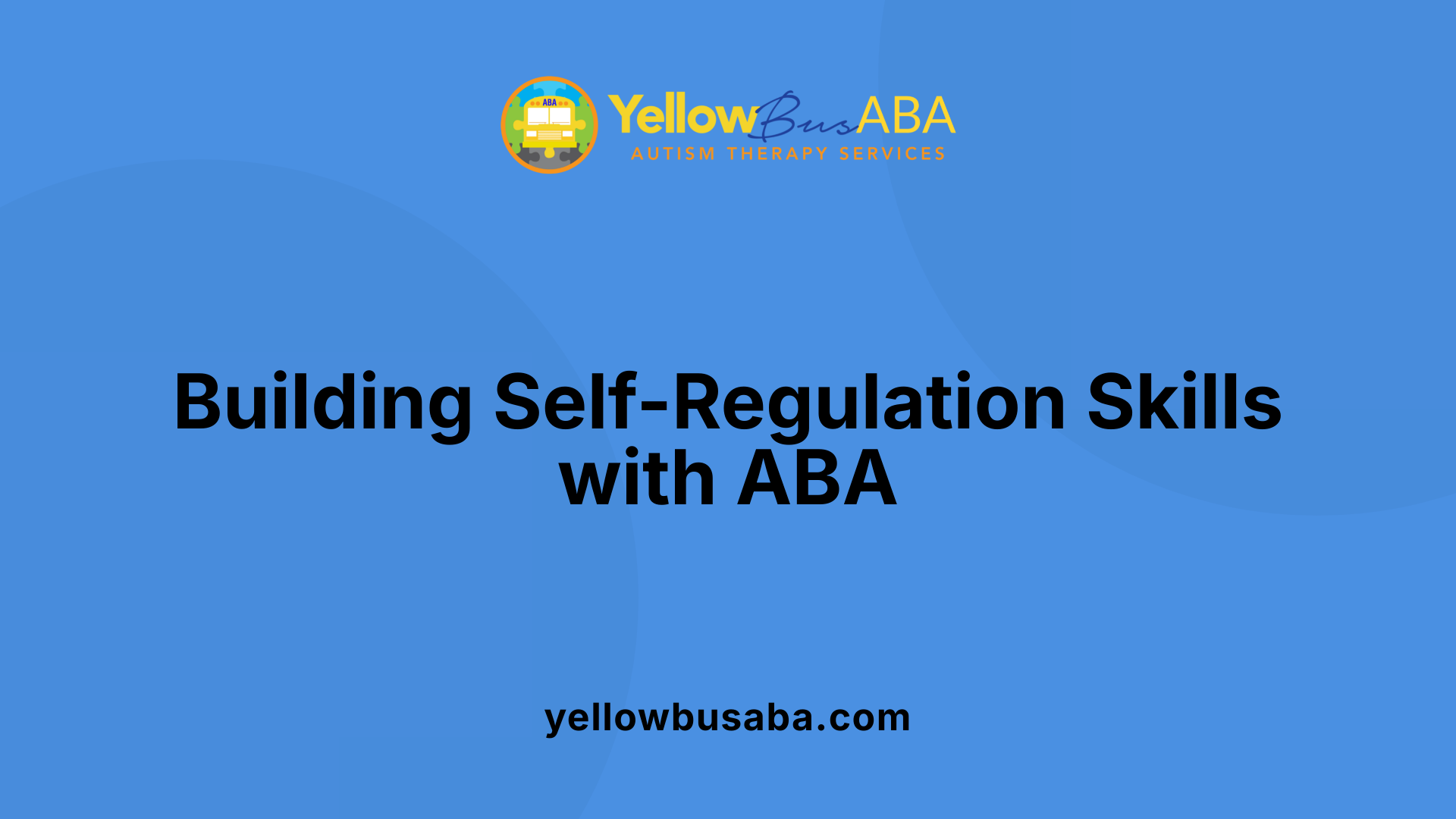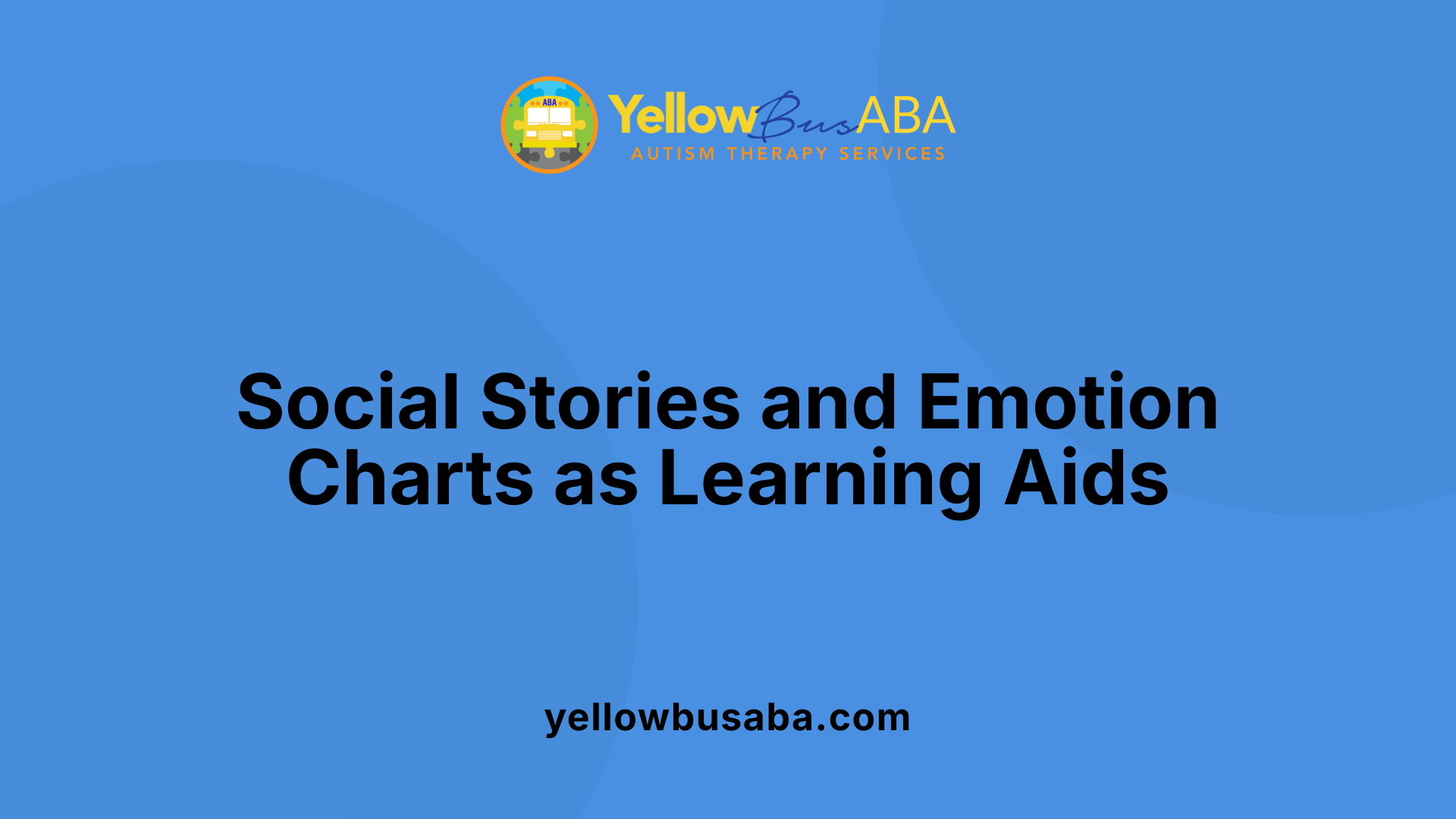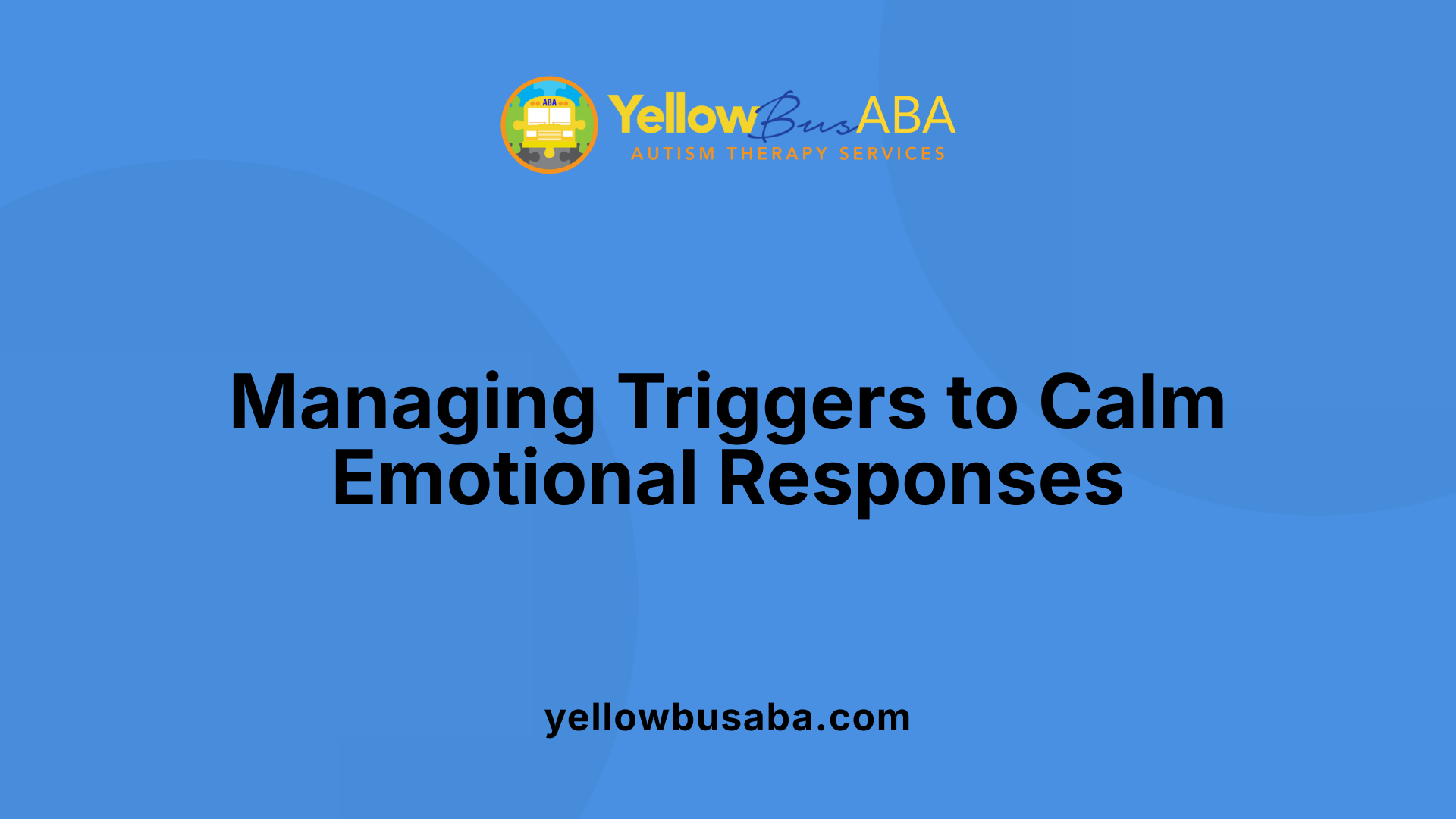How ABA Therapy Helps with Self-Regulation and Emotional Control
September 30, 2025
Empowering Emotional Mastery Through Behavioral Science

Understanding the Power of ABA in Emotional Regulation
Applied Behavior Analysis (ABA) has emerged as a highly effective, evidence-based approach to support children and individuals with autism in developing crucial social and emotional skills. By systematically teaching self-regulation and emotional control, ABA therapy facilitates meaningful improvements that enable individuals to navigate their environments more effectively and with greater confidence.
The Foundations of ABA Therapy in Emotional Development

How does ABA therapy facilitate self-regulation and emotional control?
ABA therapy helps children gain better control over their emotions by teaching them to recognize and understand their feelings. Visual tools like emotion charts and social stories serve as effective aids, allowing children to identify different emotional states clearly.
Structured interventions are a cornerstone of ABA. Techniques such as modeling and role-playing provide children with practical ways to practice appropriate responses to emotional situations. Reinforcement plays an essential role, rewarding desired behaviors to encourage their repetition and mastery.
By breaking down complex emotional skills into manageable steps, ABA therapy guides children through learning manageable coping strategies, like taking deep breaths or requesting a break. Caregivers and therapists work together, using data collection to track progress and tailor interventions to each child’s needs.
ABA also emphasizes understanding the triggers that lead to emotional outbursts. By managing environmental factors and teaching children to anticipate and prepare for challenging moments, the therapy reduces emotional reactivity.
Overall, ABA’s evidence-based, personalized approach equips children with the essential tools for emotional regulation, helping them respond more calmly and appropriately in various situations.
Visual Supports and Social Narratives in Emotional Recognition
 ABA therapy incorporates various visual tools and structured narratives to help children recognize and manage their emotions. Visual aids such as emotion charts, social stories, and flashcards are fundamental in teaching children how to identify and differentiate feelings.
ABA therapy incorporates various visual tools and structured narratives to help children recognize and manage their emotions. Visual aids such as emotion charts, social stories, and flashcards are fundamental in teaching children how to identify and differentiate feelings.
Emotion charts often display different facial expressions or color-coded feelings, making it easier for children to match their own emotions to visual cues. Social stories use simple, relatable stories that illustrate appropriate responses and behaviors in specific situations, helping children understand how to react emotionally and socially.
Flashcards serve as quick reference tools for children to recall emotions or coping strategies during moments of distress. These visual supports not only assist children in recognizing their feelings but also promote better interoceptive awareness—the understanding of body signals associated with different emotional states.
Teaching children to listen to their bodily sensations, such as a racing heart or hot cheeks, can help them identify their emotional state early. This makes it possible to implement calming routines or coping strategies in real-time, enhancing self-regulation.
Overall, the use of visual supports like emotion charts and social stories facilitates emotional literacy. They serve as tangible references that empower children to understand their feelings, develop self-awareness, and practice regulation strategies effectively, both in therapy settings and daily life.
Teaching Coping Strategies and Managing Triggers

How does ABA therapy improve emotional regulation?
ABA therapy plays a significant role in enhancing emotional regulation by systematically reinforcing appropriate responses and teaching specific coping skills. It uses evidence-based strategies to help children recognize their emotions and develop ways to manage them effectively. For example, children learn to use calming techniques like deep breathing, muscle relaxation, or sensory activities such as engaging with fidget tools and sensory play to soothe difficult feelings.
Through consistent practice and positive reinforcement, children internalize these strategies, making it easier to calm themselves during challenging situations. ABA therapy also incorporates visual supports, such as emotion charts or social stories, which help children identify and understand their emotional states. This awareness is a foundation for better self-regulation.
Moreover, ABA teaches children to connect behaviors with consequences, encouraging socially acceptable and adaptive responses. Using role-playing and social stories, children practice appropriate emotional reactions in real-world scenarios, preparing them for similar interactions outside therapy sessions. These methods, combined with problem-solving steps like decision trees, empower children to approach challenges more calmly and with less frustration.
By fostering these skills, ABA therapy reduces negative behaviors like tantrums or self-harm, while boosting self-control and social abilities. It aims to help children understand their internal emotional landscape and develop resilient, adaptive responses, ultimately leading to more stable emotional states.
What coping strategies are taught in ABA therapy?
Children learn a variety of practical coping techniques to manage their feelings in different contexts:
- Deep breathing exercises to slow their heart rate and gain composure.
- Muscle relaxation to reduce physical tension.
- Using fidget tools to channel nervous energy.
- Engaging in sensory activities to self-soothe.
- Following visual schedules and social stories to prepare for transitions or unfamiliar situations.
- Applying mindfulness activities that promote pause and reflection before reacting.
These strategies are often practiced through dry runs and small, manageable steps, enhancing their effectiveness. The focus is on empowering children with tools they can use independently, in combination with structured guidance and reinforcement.
How does visual support aid emotional regulation?
Visual supports like emotion charts help children identify and label their feelings accurately. Decision trees and problem-solving visual aids guide them through challenges by breaking down complex tasks into simpler steps.
For instance, a decision tree can conditionally guide a child on what to do if they feel upset or frustrated, helping them navigate emotional triggers without escalation.
What additional techniques support emotional control?
Mindfulness activities foster self-awareness and teach children to pause before reacting. The Zones of Regulation and the 5 Point Scale enable children to rate how they feel and decide the best coping method.
Support for flexible thinking through social narratives and structured scripts helps them practice different responses to common frustrations or anxieties.
How does ABA therapy help with self-regulation overall?
Overall, ABA therapy provides children with the tools to recognize their feelings, manage their responses, and develop emotional resilience. It systematically teaches them to respond more adaptively to various stimuli, reducing maladaptive behaviors and promoting social competence.
By tailoring interventions to individual needs and monitoring progress through data collection, ABA fosters meaningful improvements in emotional stability and self-control, making real-world social interactions more manageable.
| Technique | Description | Purpose |
|---|---|---|
| Deep breathing | Controlled inhaling and exhaling | Reduce physiological arousal |
| Muscle relaxation | Tensing and relaxing muscles | Decrease physical tension |
| Sensory activities | Fidget tools, tactile play | Self-soothing and focusing |
| Visual supports | Emotion charts, decision trees | Emotional identification and problem-solving |
| Mindfulness activities | Breathing, body awareness exercises | Enhance self-awareness and calmness |
| Social stories | Stories about social situations | Prepare children for real-world interactions |
| 5 Point Scale | Feeling rating scale | Self-monitoring and regulation |
These strategies, rooted in ABA principles, help children develop the necessary skills to better understand and control their emotions, leading to more adaptive behaviors and improved social engagement.
Reinforcement and Behavioral Interventions for Emotional Control
What specific techniques does ABA therapy employ to support self-regulation and emotional control?
ABA therapy uses a variety of methods designed to help children manage their emotions effectively. One core technique involves employing visual supports like emotion charts, social stories, and flashcards. These tools help children identify and label their feelings, making emotional awareness more accessible. Social stories often depict real-life situations, guiding children on appropriate emotional responses.
In addition, Functional Behavior Assessments (FBAs) and the A-B-C (Antecedent-Behavior-Consequence) framework are used to understand what triggers emotional reactions and how consequences influence behavior. This information allows therapists to implement personalized strategies to reduce problematic behaviors and promote positive responses.
Positive reinforcement plays a major role, rewarding desired behaviors such as requesting a break, using calming techniques, or employing coping strategies. Differential reinforcement of alternative behaviors involves reinforcing more acceptable responses to emotional challenges, helping children replace maladaptive reactions.
Another important technique is behavioral shaping, where complex skills like self-regulation are broken into smaller, manageable steps. This gradual approach allows children to learn and internalize behaviors like deep breathing, muscle relaxation, or sensory activities such as using fidget tools.
Sensory integration strategies address children’s sensory sensitivities that can impact emotional responses. Incorporating calming activities—such as mindfulness exercises and sensory breaks—helps them self-regulate during overwhelming moments.
Parent training and collaboration are also vital. Educating families on these techniques ensures consistency and generalization of skills across settings. Overall, these tailored interventions lead to improved emotional control, helping children better navigate social and emotional situations.
Promoting Generalization and Transfer of Skills

How does ABA therapy facilitate self-regulation and emotional control?
ABA therapy plays a vital role in helping children develop self-regulation and emotional control. It does this by teaching children to recognize and label their emotions through visual aids such as emotion charts and social stories. These tools help children understand what they are feeling and why.
The therapy employs structured techniques like modeling, role-playing, and positive reinforcement to teach appropriate responses to various emotional situations. For example, a child might practice calming techniques in a safe environment, gradually learning to apply them in real-life settings.
Identifying triggers in the environment is another focus of ABA. By understanding antecedents—events that lead to a certain behavior—both children and caregivers can work together to modify settings, reducing emotional reactivity. Coping strategies such as requesting a break, using a calming space, or engaging in sensory activities are taught to help children manage difficult feelings.
Reinforcement plays a crucial part in ensuring these skills are practiced regularly and transferred across different contexts. Caregiver training is essential, enabling families to reinforce these strategies at home and in community settings. Additionally, environmental adaptations, like visual schedules or quiet zones, support the child’s emotional regulation efforts.
Overall, ABA's evidence-based, individualized approach helps children build resilience and independence in managing their emotions. By systematically teaching and reinforcing self-regulation skills, ABA equips children with lifelong tools to navigate social and emotional challenges confidently.
The Role of Mindfulness and Internal Awareness Techniques
What specific techniques does ABA therapy employ to support self-regulation and emotional control?
ABA therapy uses a variety of methods to help children develop better control over their emotions. Visual tools like emotion charts, social stories, and flashcards assist children in recognizing and understanding different feelings. These visual supports make abstract emotional concepts more concrete and accessible.
In addition, ABA incorporates structured problem-solving tools such as decision trees and the Zones of Regulation. These strategies allow children to assess their emotional state and choose appropriate calming or coping techniques. The 5 Point Scale, for example, helps children rate their feelings from 1 (calm) to 5 (very upset), guiding them to select strategies based on their current level of arousal.
Social stories and role-playing activities further prepare children for real-world emotional challenges. Through practicing these scenarios, children learn suitable responses and develop confidence in managing their feelings.
ABA also employs behavioral reinforcement techniques to support emotional control. Positive reinforcement encourages children to use coping strategies, such as requesting breaks or engaging in sensory activities. Parental training and sensory integration strategies are also integrated to reinforce skills across different settings.
How do mindfulness activities and interoceptive awareness improve emotional regulation?
Mindfulness practices are increasingly used within ABA programs to help children pause and reflect before reacting emotionally. Techniques like deep breathing exercises, guided imagery, and sensory activities foster a mindful awareness of one's body and feelings.
Interoceptive awareness, or IA, involves listening to internal body signals like a racing heart or hot cheeks. Teaching children to recognize these sensations helps them identify when they are becoming upset or overwhelmed. Once aware, children can implement calming routines such as taking a walk, practicing breathing exercises, or finding a quiet space.
Supporting children in understanding what feeling calm feels like is vital. Visual supports, such as tools, the Zones of Regulation, or the 5 Point Scale, assist children in rating their emotions and deciding on appropriate actions. These strategies promote self-awareness and help children build skills to manage their emotional responses effectively.
How does fostering reflective practice and emotional insight aid in emotion regulation?
Encouraging children to think about their feelings and behaviors fosters self-awareness and emotional insight. Reflective practice allows children to analyze situations and identify their emotional triggers, which is critical for developing long-term self-regulation skills.
Practices like social narratives and structured scripts give children frameworks to understand and evaluate their responses. Mindfulness activities teach them to observe their emotions without immediately reacting, providing space for thoughtful responses.
Parent training programs, mindfulness exercises, and tools like the 5 Point Scale help children develop a clearer understanding of their emotional landscape. Over time, these practices enable children to better control their reactions, adapt to changes, and handle frustrations more effectively.
Overall, integrating mindfulness, internal awareness, and reflective strategies into ABA therapy creates a comprehensive approach to emotional regulation, empowering children to navigate their feelings in daily life skills.
Building Towards Emotional Resilience with ABA
ABA therapy plays a pivotal role in helping individuals develop lasting self-regulation and emotional control skills. By systematically teaching recognition, coping strategies, and adaptive responses, ABA enables individuals to better understand and manage their emotions across different contexts. Incorporating visual supports, behavioral techniques, mindfulness activities, and caregiver involvement ensures these skills are reinforced and generalized over time. Ultimately, ABA empowers individuals to lead more emotionally balanced, socially connected lives with increased resilience and independence.






